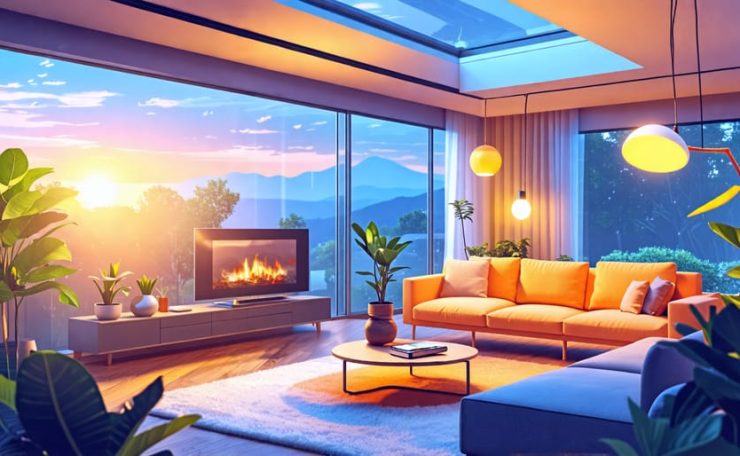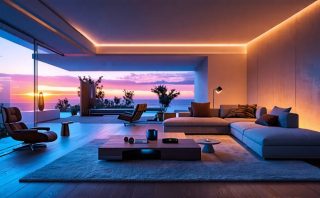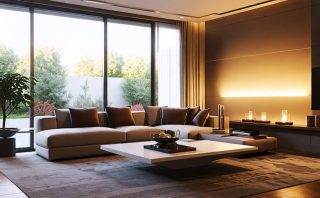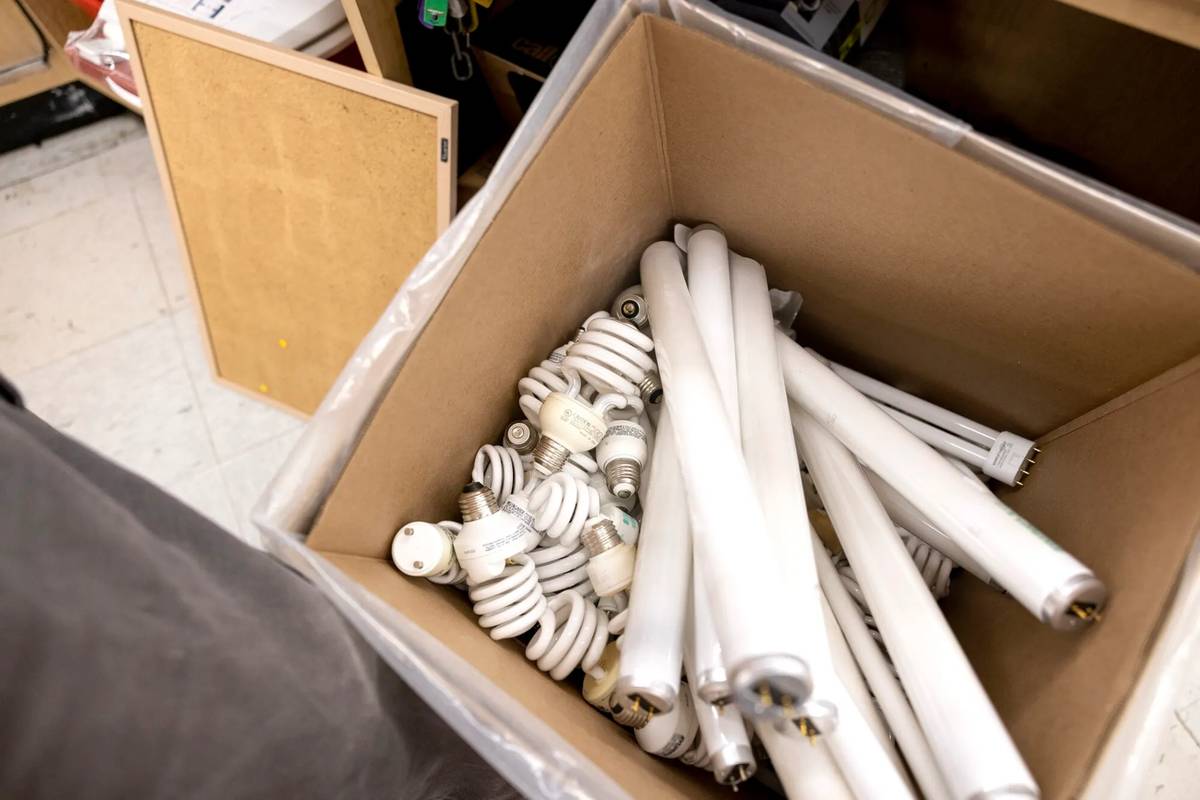Choose LED lights for the highest efficiency, longest lifespan, and lowest energy consumption compared to incandescent, halogen, and CFL bulbs. Install smart lighting controls like dimmers, timers, and motion sensors to automatically adjust brightness and turn lights off when not in use, saving up to 30% on lighting costs. Maximize natural light with well-placed windows, skylights, and light tubes to reduce the need for artificial lighting during the day. Opt for ENERGY STAR certified lighting fixtures and bulbs, which use 70-90% less energy than traditional lighting while providing the same brightness.
LED Bulbs: The New Gold Standard
LED bulbs are the new gold standard in energy-efficient lighting. These innovative bulbs use light-emitting diodes (LEDs) to produce light, which requires significantly less energy than traditional incandescent bulbs. When electricity passes through the diode, it illuminates, creating a bright, consistent light without the need for a filament or gas.
The benefits of LED bulbs are numerous. They have an incredibly long lifespan, lasting up to 50,000 hours or more—that’s about 5 years of continuous use! This longevity means you’ll save money on replacement costs over time. Additionally, LED bulbs use up to 90% less energy than incandescent bulbs, which translates to substantial savings on your electricity bill. In fact, switching to LED lighting can save homeowners an average of $225 per year.
LED bulbs are ideal for a wide range of applications, from interior home lighting to outdoor landscaping and commercial spaces. They come in various shapes, sizes, and color temperatures, making them versatile for any setting. Plus, they emit minimal heat, reducing the risk of fire and making them safer to handle.
By upgrading to LED bulbs, you can enjoy high-quality, long-lasting lighting while significantly reducing your energy consumption and costs. With their superior efficiency and performance, it’s no wonder LED bulbs have become the new gold standard in lighting technology.
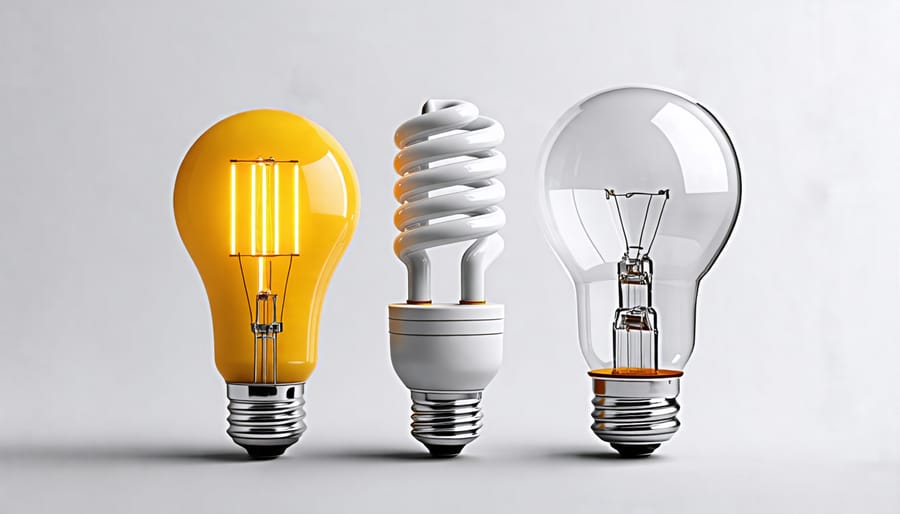
Compact Fluorescent Lamps (CFLs)
Compact Fluorescent Lamps (CFLs) revolutionized energy-efficient lighting by improving upon traditional fluorescent tubes. CFLs use about 70% less energy than incandescent bulbs and last up to 10 times longer, significantly reducing energy costs and maintenance. They also produce less heat, making them safer and more comfortable to use. However, CFLs contain small amounts of mercury, requiring careful disposal, and may take a few moments to reach full brightness. They work best in areas where lights stay on for extended periods, such as living rooms, kitchens, and offices. While CFLs are more energy-efficient than incandescents, they are outperformed by LED bulbs, which use even less energy, last longer, and offer superior light quality. Despite this, CFLs remain a cost-effective and energy-saving option for many applications, particularly when replacing incandescent bulbs in frequently used fixtures.
Halogen Bulbs: Bright But Inefficient
Halogen bulbs are known for their bright, white light and excellent color rendering, making them a popular choice for accent lighting, task lighting, and retail displays. However, these advantages come at a cost. Halogen bulbs generate significant heat, which can be a safety concern and contribute to higher cooling costs in the summer months. They also consume more energy compared to other lighting options, such as LED bulbs.
For those looking to replace their halogen bulbs with a more energy-efficient alternative, LED bulbs are an excellent choice. LED bulbs offer comparable brightness and color rendering while consuming up to 80% less energy and lasting up to 25 times longer than halogen bulbs. They also emit minimal heat, making them safer and more comfortable to use in various applications. Consider using LED spot lights, flood lights, or even versatile LED strip lights as energy-saving alternatives to halogen bulbs.
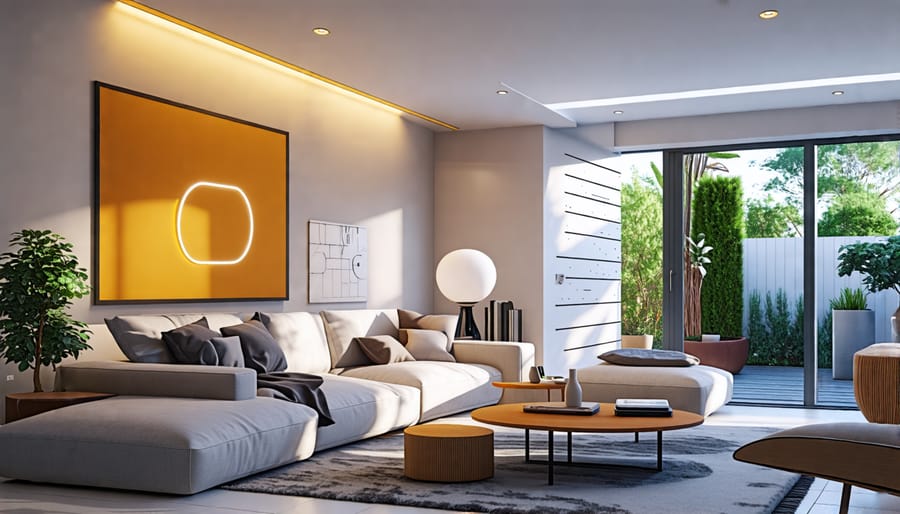
Smart Lighting For Maximum Efficiency
Smart Bulbs
Smart bulbs offer an innovative way to save energy while enjoying customizable lighting options. LED smart bulbs can be controlled remotely via smartphone apps or voice assistants, allowing you to adjust brightness, color temperature, and even set schedules for optimal energy efficiency. Many smart bulbs also feature built-in sensors that automatically turn off lights when no one is in the room, further reducing wasted energy. With the ability to create personalized lighting scenes and easily turn off lights when not in use, smart bulbs provide a convenient and effective solution for minimizing energy consumption without compromising on style or functionality.
Smart Switches and Dimmers
Smart switches and dimmers provide an energy-efficient lighting solution without requiring a complete overhaul of your existing bulbs. These devices work with regular incandescent, CFL, or LED bulbs, allowing you to control the brightness and schedule of your lights. By dimming the lights when full brightness isn’t necessary, you can significantly reduce energy consumption. Smart switches also enable you to set schedules, ensuring lights are only on when needed. Some models even feature occupancy sensors that automatically turn off lights in empty rooms. Integrating smart switches and dimmers into your lighting system is a simple yet effective way to enhance energy efficiency and convenience.
Solar-Powered Lighting
Solar-powered lighting offers a sustainable and energy-efficient solution for illuminating outdoor spaces without relying on the electrical grid. These innovative systems harness the power of the sun to charge batteries during the day, providing a reliable light source at night. Popular applications for solar lighting include landscape lighting, pathway illumination, and security lighting. Solar-powered fixtures are also invaluable as emergency backup lighting during power outages. By utilizing solar energy, these lighting solutions achieve net-zero energy usage, meaning they produce as much energy as they consume. Companies like SOLTECH Solar Lighting offer a wide range of stylish and durable solar-powered fixtures suitable for various outdoor settings. Incorporating solar lighting into your exterior design not only reduces your environmental impact but also helps lower your energy bills, making it an attractive option for eco-conscious homeowners and businesses alike.
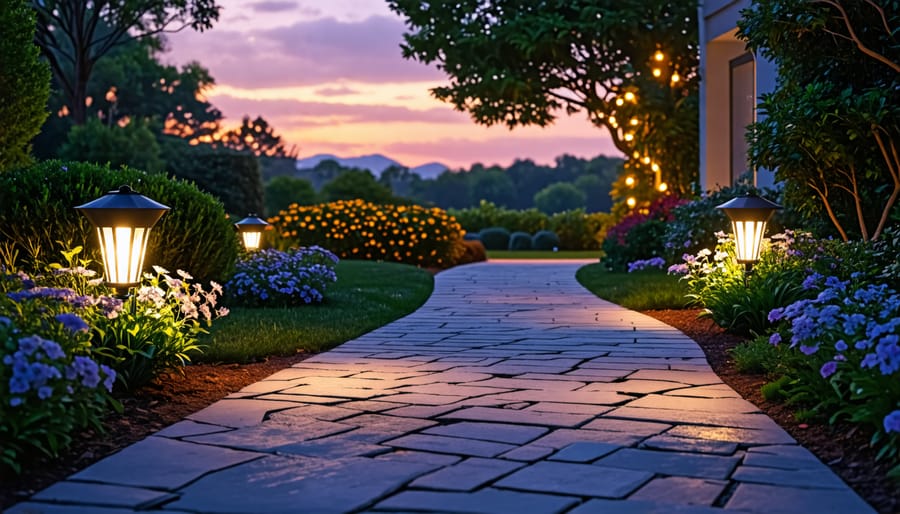
Lighting Design Tips For Efficiency
To maximize lighting efficiency through design, start by utilizing task lighting to focus illumination where it’s needed most, reducing overall energy consumption. Place lamps or directional fixtures near work areas, reading nooks, or vanity mirrors. Next, take advantage of natural light by keeping windows unobstructed and using sheer or light-filtering curtains. This can significantly decrease the need for artificial lighting during the day.
When selecting bulbs, opt for Energy Star certified LED or CFL options, as they use 70-90% less energy than traditional incandescent bulbs. Properly place these bulbs in fixtures that direct light where it’s needed, minimizing wasted illumination. Consider using dimmer switches to adjust light levels based on your needs and further conserve energy.
Additionally, choose light fixtures that are designed to be energy efficient, such as those with reflective surfaces that help to maximize light output. Ensure your fixtures are the appropriate size for the space to avoid over-lighting. By implementing these practical lighting design tips, you can Upgrade Your Living Space while significantly reducing your energy consumption and costs.
Conclusion
Implementing energy efficient lighting is a smart choice with lasting benefits for your home or business. By switching to LED, CFL, or other high-efficiency options, you can significantly reduce your energy consumption and costs while enjoying superior light quality. Smart home systems and solar-powered lighting further enhance energy savings and convenience. Remember, even small changes like using dimmers or motion sensors can make a big impact. As you plan your lighting upgrades, consider your specific needs, budget, and design preferences to find the best solutions for your space. Start your journey towards a more energy efficient and sustainable future today by making informed lighting choices. The long-term rewards of lower energy bills, reduced environmental impact, and improved lighting quality are well worth the investment. Embrace the power of energy efficient lighting and start saving now!

